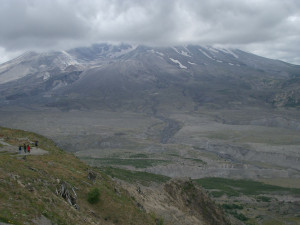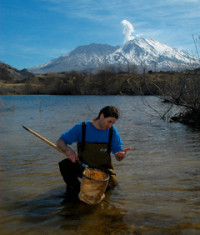


This May 18 is the fortieth anniversary of Mt. St. Helens last major eruption, which blew 1,300 feet off the top of the mountain and created the largest landslide in recorded history. Exactly 40 years, one hour and 28 minutes ago from the start of this week's Locus Focus, Mt. St. Helens' once familiar symmetrical ice cream cone peak was sheared off and altered forever, as were many other familiar landmarks around the mountain. So to celebrate this milestone anniversary, on this episode of Locus Focus, we go for a hike on the mountain with Charlie Crisafulli, a research ecologist with the Pacific Northwest Research Station. We look at how quickly the mountain has come back to life, in many surprising ways, since the eruption, and the lessons Mt.St. Helens can teach us about resiliency and survival, as we wend our way through the COVID-19 pandemic.
Charlie Crisafulli is a research ecologist who’s been conducting work at Mount St. Helens since July 1980, just weeks after the catastrophic May 18, 1980, eruption. He leads studies that are providing insights into the initial and long-term responses of ecosystems to large, infrequent disturbance. His studies explore the ecology of the volcano’s small mammals, birds, amphibians, insects, and plants. His other research interests include the role of exotic species in montane lakes and the ecology of rare endemic salamanders.
- KBOO


